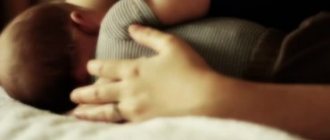Causes
The main factor in the unpleasant situation is a violation of the process of chewing and swallowing. From the mouth, food enters the esophagus, which is located next to the pharynx. In this area there is the epiglottis, which acts as a damper. When a piece of food is swallowed, it blocks the lumen in the trachea, and when breathing, it prevents air from entering the upper digestive tract.
Swallowing process.
If a child or another person chokes while eating, it means that precautions were not followed. This can happen when talking while eating or taking intense breaths. In this case, the epiglottis does not completely close the tracheal lumen. Even a small crumb triggers a protective mechanism - a reflex cough. With sharp exhalations, foreign elements come out without additional help. But there are situations when they choke, but there is no cough effect and the person begins to choke.
When might you need help?
When the airways are blocked, it is impossible to inhale and exhale, the cough is absent or has insufficient intensity. Such cases require urgent intervention from loved ones, strangers in a public place. When choking on food, the lack of air inevitably leads to oxygen starvation of the human brain.
If a person chokes, then in the event of blackout and cardiac arrest, the rescuer will have only a few minutes to restore respiratory functions.
Why is this happening?
To many, it seems incredible and even somewhat funny to die from choking on a bone or a piece of food.
But in vain. Stubborn statistics say that this is precisely the cause of death of about 3.8 thousand people every year! How does this happen? It’s so simple that the unfortunate man choked on his food, but those around him couldn’t, they didn’t have time to help him in time. Therefore, it is necessary for everyone to know what to do if a person is choking and suffocating.
The risk factors here are:
- The most common cause of death for adults is too large a piece of meat. Due to anatomical features, a child can choke on any portion of food.
- Swallowing a piece of food that is too large and not chewed properly. Again, since childhood, we hear at the table: “Chew carefully, slowly!”
- Alcohol consumption. Under the influence of alcoholic drinks during feasts, a person partially loses control over his actions and behavior, which is the cause of the tragedy.
- Dentures in the elderly.
- Talking, laughing with your mouth full.
- Children's games during meals.
Symptoms of suffocation
What do the symptoms of choking look like and when should you take action? There are 4 stages in total, each with its own manifestations from the respiratory tract.
- A person who has choked has a strong fear and becomes agitated. At the same time, he may open his eyes wide and indicate with gestures discomfort in the chest. Shortness of breath begins to appear, and the eyes become dark due to lack of oxygen. But a person cannot voice his feelings. When determining the pulse, its high frequency is noted, the pressure rises.
After a person chokes, suffocation may occur. - The body's compensatory abilities deteriorate. Breathing becomes intermittent, shallow, or disappears completely. The skin becomes very pale, and in the facial area the skin becomes purple or bluish.
- This stage is characterized by cessation of respiratory function. The symptoms become aggravated, the pressure in the blood vessels drops sharply. The person loses consciousness and may completely suffocate.
- Agonal breathing does not provide the body with the necessary amount of oxygen. Pulse and pressure are difficult to determine even instrumentally. A wave of convulsions sweeps through the body. At this stage, there is a high probability of clinical death.
Partial and complete suffocation
A choking person exhibits two types of suffocation. In case of incomplete violation, a foreign object contributes to a partial narrowing of the lumen of the trachea, and complete suffocation leads to the closure of the lumen of the vocal cords. The greatest difficulty is caused by large objects stuck on the surface of the respiratory system, which prevents their passage into the trachea. In case of complete suffocation, the victim cannot be controlled, he rushes about, and it is almost impossible to help him by force. If he quickly lost consciousness when he choked, resuscitative measures are taken.
Increased salivation: causes in adults, symptoms and treatment
Hypersalivation is a pathological condition characterized by increased secretion of the salivary glands.
Thus, in children under six months of age, such increased salivation is considered normal and does not require any special treatment.
On the other hand, hypersalivation in adults is a rather serious disease, which not only worsens the quality of life, but also brings discomfort. In this article we will look at this pathology in more detail.
general information
Salivation is known to be a normal process. Thus, approximately 2 mg of saliva is released every 10 minutes. However, in some cases, so-called hypersalivation may occur.
This pathology is popularly known as increased salivation. The causes in adults can be very different, ranging from oral diseases to serious neurological disorders.
It is also important to note that some patients perceive a normal amount of saliva as increased. Most often this occurs due to impaired swallowing function. In this case, a person simply cannot swallow saliva completely, and it constantly accumulates in the oral cavity. In fact, there is no need to talk about serious pathology here. Doctors call this hypersalivation false.
Primary symptoms
Saliva is constantly produced by special glands. The therapeutic norm is the production of liquid in the amount of 2 ml in approximately ten minutes. Increased salivation in adults can only be alarming when volumes exceed the 5 ml mark. In this case, there is too much liquid in the mouth, so there is a reflexive desire to swallow it.
Quite often, doctors associate this kind of problem with an inflammatory process in the oral cavity and various injuries to the tongue. In this case, the feeling of an abundance of fluid is false, since salivation is within normal limits.
The same sensations, not justified by dysfunction of the glands in the oral cavity, can occur in patients suffering not from neurological or dental problems, but susceptible to so-called obsessive states.
Quite rarely, hypersalivation is accompanied by a change in taste sensations (too strong or weak sensitivity). Some patients experience increased salivation and nausea at the same time.
Why does this pathology occur?
In a healthy person, saliva is secreted as a response to the aroma of food; taste analyzers also have nerve endings on the oral mucosa. Maximum irritation causes, accordingly, profuse salivation. For example, the more pleasant the smell, the faster your appetite flares up. The gastrointestinal tract thus communicates that it is ready to “work.”
The salivary glands are known to function constantly. They are designed to moisturize the oral cavity and protect the tongue, tonsils and nasopharynx from drying out. In just one day, about two liters of liquid are produced. A decrease in these volumes is usually observed during sleep, during dehydration and during stress.
Why is salivation increased in adults? Main reasons
- Intoxication of the body. It is poisoning that is most often the main provoking factor causing the development of this pathology. In this case, the patient's age does not play a special role. Poisoning can be from food, alcohol or medication.
- Diseases of the gastrointestinal tract. Acute gastritis, cholecystitis, stomach ulcers - these are the ailments that are fundamental factors in the appearance of such a problem as increased salivation.
- The reasons for the development of this type of pathology in adults often lie in the intake of certain groups of medications. There are many substances in medications that lead to hypersalivation. To exclude this cause, it is necessary to adjust the dose of the drug or select another remedy.
- Regular stressful situations, central nervous system diseases, mental disorders. In this case, there is a weakening of the muscles involved in the swallowing process. As a result, fluid constantly accumulates in the oral cavity.
- Vascular pathologies.
- Worms.
- Oral diseases (ulcerative stomatitis).
- Foreign bodies in the oral cavity (improperly installed dentures, braces, chewing gum). All these objects constantly irritate the nerve endings of the oral mucosa, causing increased salivation.
- Symptoms of this pathology very often appear in endocrine diseases. For example, diabetes mellitus, thyroid diseases, tumors - all these problems cause increased secretion of the salivary glands.
- Smoking. Active smokers actually very often have to deal with this pathology. Due to constant irritation of the oral cavity by nicotine, the salivary glands begin to reflexively produce more secretion.
What is the cause of hypersalivation in children?
It should be noted that in the first year of a child’s life, this pathology is not considered a serious disease requiring treatment. Increased salivation in a baby is a normal process. In this case, the so-called unconditional reflex factor comes to the fore.
When the very first teeth erupt, excessive salivation is also not considered a disease and does not require surgical intervention.
It is important to note that older children should not suffer from hypersalivation. If a problem still exists, it is extremely important to consult a specialist.
At about three months, the baby's salivary glands begin to work. It is at this time that parents usually notice severe drooling. However, there is no need to panic for no reason, as it takes a baby some time to learn to swallow on its own.
Hypersalivation in children is often part of the work of the defense system. The thing is that along with the fluid that flows out of the mouth, various bacteria are removed.
Quite rarely, increased salivation is a sign of damage directly to the brain itself, which could have occurred in the perinatal period.
Types of disease
- Drug hypersalivation. Most medications (for example, Nitrazepam) that affect salivation provoke the development of xerostomia.
- A psychogenic type of disease, which also entails increased salivation. The reasons for the development of this pathology in adults remain unknown. Sometimes drooling becomes so profuse that patients have to constantly carry a handkerchief with them.
- Hypersalivation in bulbar or pseudobulbar syndrome. Saliva is usually thick, and its volume can be up to 900 ml per day.
- Excessive drooling in patients with cerebral palsy is explained by dysfunction of the oral muscles.
Increased salivation during pregnancy
As you know, a woman’s body undergoes various changes during pregnancy, including at the hormonal level. According to experts, it is in the early stages that many women notice the primary signs of hypersalivation.
Most often, this problem accompanies toxicosis. It is important to note that in some cases, hypersalivation is not associated with actual activation of the salivary glands. The thing is that a woman is constantly trying to suppress attacks of nausea and vomiting, thereby she begins to involuntarily swallow less often. As a result, there is a feeling that there is actually more saliva than there should be.
Often, increased salivation during pregnancy is somewhat aggravated by attacks of heartburn. In this case, the body conditionally receives a signal to soften the acid with saliva, which, due to its high bicarbonate content, is classified as an alkaline environment.
Sometimes hypersalivation occurs due to the same factors as in ordinary adults. In this kind of situation, pregnant women are advised to inform their doctor about this in order to rule out obvious causes of the problem.
Severe nocturnal hypersalivation
During sleep, as is known, the work of the glands responsible for the production of saliva slows down somewhat. However, it also happens that the secret begins to be produced before the person finally wakes up. All this entails spontaneous drainage of liquid from the mouth of a sleeping person.
If such cases are rare, then there is no reason to worry. However, regular recurrence of this problem requires consultation with a specialist.
Doctors note that in some cases, during sleep, the body loses control over reflexes. This also leads to increased salivation.
Hypersalivation can occur due to certain diseases that cause nasal congestion (ARVI, influenza). As a rule, increased salivation disappears after the final disappearance of the main cause - difficulty breathing.
Diagnostic measures
Diagnostics in this case involves the following steps:
- Collecting a complete medical history (when the primary symptoms appeared, the presence of concomitant diseases, etc.).
- Life activity analysis. The thing is that the hereditary factor often plays a primary role in the occurrence of such a pathology as increased salivation. The causes in adults often lie in the abuse of bad habits (for example, smoking).
- A detailed examination of the oral cavity for ulcers or other lesions of the mucous membrane.
- Enzymatic analysis of saliva itself.
- Additional examination by a dentist, psychiatrist and neurologist to identify possible indirect causes.
What should the treatment be?
We can talk about prescribing therapy only after the final identification of the cause that led to the development of hypersalivation. First of all, you need to seek advice from a therapist. After examination and medical history, he will be able to recommend a specialist.
Depending on the root cause, the doctor prescribes appropriate treatment. In this case, it is not the hypersalivation itself that is eliminated, but the main factor that provoked its development. This may be dental, neurological or gastroenterological treatment.
How to get rid of increased salivation? In particularly critical situations, as a rule, specific therapy is prescribed that acts directly on salivation itself, namely:
- Taking anticholinergic drugs (Riabal, Scopolamine, Platifillin). These drugs suppress excessive saliva secretion.
- Removal of glands (this method often entails disruption of the functioning of the facial nerves).
- For neurological disorders, facial massage and exercise therapy are prescribed.
- Radiation therapy.
- Cryotherapy (cold treatment).
- To block excessive saliva production for a period of time (up to one year), Botox injections are performed.
In addition to all of the above medications, homeopathic options are often used. However, they are prescribed only after consultation with a doctor.
Useful tips
If the diagnostic examination does not reveal any significant abnormalities, you can try to use the recommendations below.
First of all, it is necessary to exclude all spicy, fatty and salty foods from the diet, as they provoke irritation of the oral mucosa. The thing is that many people complain of increased salivation after eating. These kinds of restrictions can help solve this problem.
It is extremely important to stop smoking and drinking alcoholic beverages. As a preventive measure, you can rinse your mouth with a decoction of chamomile or oak bark. These agents act as an antiseptic and prevent the development of this pathology.
Source: https://FB.ru/article/163610/povyishennoe-slyunootdelenie-prichinyi-u-vzroslyih-simptomyi-i-lechenie
What to do if a person is choking and suffocating?
First aid measures must be taken as quickly as possible.
With partial overlap
The person is observed, and sometimes food or other foreign objects are lifted toward the vocal cords.
The patient does not lose consciousness, he can talk, take deep breaths and cough convulsively. The person is observed, sometimes food or other foreign object rises to the vocal cords, but does not come out. It is prohibited to knock between the shoulder blades with your palms; this reduces the productivity of the cough reflex.
In case of partial suffocation, if choking, do not use the Heimlich maneuver, which requires sufficient accumulation of air in the lungs. If the foreign object does not come out and the patient develops complicated symptoms, emergency medical attention is required.
Complete suffocation
Tap the palm between the shoulder blades several times.
When a victim chokes on food, the airway becomes completely blocked. Usually, he hugs his neck and is unable to cough effectively. During breathing, a characteristic whistle appears, indicating respiratory failure. At this moment, knock the palm between the shoulder blades several times. If the state does not change, a special action algorithm is used.
Heimlich maneuver
What should you do if someone is choking badly, and the usual methods for removing a foreign body do not help? To do this, use the Heimlich method as long as the victim is conscious. You need to stand behind the person and grab him with both hands. One hand is clenched into a fist and, using the thumb, presses on the stomach just above the navel (epigastric zone). Using pushing movements, press down the fist with the palm of the other hand. The arms are bent at the elbows; the chest should not be compressed.
Using pushing movements, press down the fist with the palm of the other hand.
This method is performed until the foreign body leaves the respiratory tract. If the victim suddenly loses consciousness when he chokes, immediate resuscitation is required. Artificial ventilation and chest compression are used. After each inhalation, inspect the oral cavity. A foreign body may enter it, which is carefully pulled out.
How to save yourself from suffocation if you choked on food. Self-help methods
A foreign body can enter the area of the entrance to the larynx during a deep breath or when swallowing a large piece of food, laughing or coughing while eating. Incomplete closure of the airways at the level of the larynx is accompanied by irritation of the mucous membrane, which is manifested by coughing, hoarseness or loss of voice, and difficult intermittent (stridorous) breathing.
When coughing, a foreign body can be removed from the respiratory tract and normal breathing can be restored. If this does not happen, then in the event of complete blockage of the airway lumen (asphyxia), pulmonary ventilation stops, the face turns blue, and brain hypoxia quickly increases. The victim loses consciousness, falls, and there is no breathing.
First aid for a foreign body in the respiratory tract
First aid consists of quickly creating high pressure in the respiratory system below the site of obstruction, in the hope of pushing the foreign body into the esophagus or oral cavity.
Causes
The main factor in the unpleasant situation is a violation of the process of chewing and swallowing. From the mouth, food enters the esophagus, which is located next to the pharynx.
In this area there is the epiglottis, which acts as a damper.
When a piece of food is swallowed, it blocks the lumen in the trachea, and when breathing, it prevents air from entering the upper digestive tract.
If a child or another person chokes while eating, it means that precautions were not followed. This can happen when talking while eating or taking intense breaths. In this case, the epiglottis does not completely close the tracheal lumen.
Even a small crumb triggers a protective mechanism - a reflex cough. With sharp exhalations, foreign elements come out without additional help.
But there are situations when they choke, but there is no cough effect and the person begins to choke.
When might you need help?
When the airways are blocked, it is impossible to inhale and exhale, the cough is absent or has insufficient intensity. Such cases require urgent intervention from loved ones, strangers in a public place. When choking on food, the lack of air inevitably leads to oxygen starvation of the human brain.
If a person chokes, then in the event of blackout and cardiac arrest, the rescuer will have only a few minutes to restore respiratory functions.
Symptoms of suffocation
What do the symptoms of choking look like and when should you take action? There are 4 stages in total, each with its own manifestations from the respiratory tract.
- A person who has choked has a strong fear and becomes agitated. At the same time, he may open his eyes wide and indicate with gestures discomfort in the chest. Shortness of breath begins to appear, and the eyes become dark due to lack of oxygen. But a person cannot voice his feelings. When determining the pulse, its high frequency is noted, the pressure rises. After a person chokes, suffocation may occur.
- The body's compensatory abilities deteriorate. Breathing becomes intermittent, shallow, or disappears completely. The skin becomes very pale, and in the facial area the skin becomes purple or bluish.
- This stage is characterized by cessation of respiratory function. The symptoms become aggravated, the pressure in the blood vessels drops sharply. The person loses consciousness and may completely suffocate.
- Agonal breathing does not provide the body with the necessary amount of oxygen. Pulse and pressure are difficult to determine even instrumentally. A wave of convulsions sweeps through the body. At this stage, there is a high probability of clinical death.
Read also Alcohol poisoning: symptoms, first aid, treatment
Partial and complete suffocation
A choking person exhibits two types of suffocation. In case of incomplete violation, a foreign object contributes to a partial narrowing of the lumen of the trachea, and complete suffocation leads to the closure of the lumen of the trachea.
The greatest difficulty is caused by large objects stuck on the surface of the respiratory system, which prevents their passage into the trachea. In case of complete suffocation, the victim cannot be controlled, he rushes about, and it is almost impossible to help him by force.
If he quickly lost consciousness when he choked, resuscitative measures are taken.
What to do if a person is choking and suffocating?
First aid measures must be taken as quickly as possible.
With partial overlap
The person is observed, sometimes food or other foreign object rises to the ligaments.
The patient does not lose consciousness, he can talk, take deep breaths and cough convulsively. The person is observed, sometimes food or other foreign object rises to the ligaments, but does not come out. It is prohibited to knock between the shoulder blades with your palms; this reduces the productivity of the cough reflex.
In case of partial suffocation, if choking, do not use the Heimlich maneuver, which requires sufficient accumulation of air in the lungs. If the foreign object does not come out and the patient develops complicated symptoms, emergency medical attention is required.
Complete suffocation
Tap the palm between the shoulder blades several times.
When a victim chokes on food, the airway becomes completely blocked. Usually, he hugs his neck and is unable to cough effectively.
During breathing, a characteristic whistle appears, indicating respiratory failure. At this moment, knock the palm between the shoulder blades several times.
If the state does not change, a special action algorithm is used.
Heimlich maneuver
What should you do if someone is choking badly, and the usual methods for removing a foreign body do not help? To do this, use the Heimlich method as long as the victim is conscious.
You need to stand behind the person and grab him with both hands. One hand is clenched into a fist and, using the thumb, presses on the stomach just above the navel (epigastric zone). Using pushing movements, press down the fist with the palm of the other hand.
The arms are bent at the elbows; the chest should not be compressed.
Using pushing movements, press down the fist with the palm of the other hand.
This method is performed until the foreign body leaves the respiratory tract.
If the victim suddenly loses consciousness when he chokes, immediate resuscitation is required. Artificial ventilation and chest compression are used. After each inhalation, inspect the oral cavity.
A foreign body may enter it, which is carefully pulled out.
When a foreign body gets stuck in the respiratory tract
If a piece of food does not come out, or the person has choked, then cardiac massage and artificial respiration are not stopped until qualified medical help arrives. The car has the necessary equipment for resuscitation; further actions to save the victim will continue under the supervision of a doctor.
The effectiveness of rescue measures can be judged by the elimination of symptoms. The person regains consciousness, his skin acquires a healthy tint, and shortness of breath stops. Breathing, pulse and blood pressure also stabilize.
Tips to avoid choking on food
The smaller the pieces, the more likely it is that if they enter the trachea they will come out on their own when coughing. To avoid choking, children are taught to chew their food thoroughly until it has the consistency of puree.
Elderly people should monitor the strength of their dentures. Their incorrect position leads to a large piece getting into the throat. It is not recommended to consume liquid and solid food together, eat on the go or while playing.
The greatest danger comes from talking while eating.
Read also First aid for road traffic accidents
What to do if you choked?
Hug yourself with your arms at the level of the upper abdomen and squeeze tightly, while trying to cough out the foreign body from the larynx.
What to do if a person chokes in your presence?
If someone chokes in your presence, then help in this case will depend on the victim’s consciousness. If a person is conscious, you can help him by delivering several short, strong blows to the interscapular area.
If this technique is ineffective, use the Heimlich method (≈ Heimlich): approach the victim from behind, clasp him with clasped hands at the level of the upper abdomen and push the chest in an upward direction.
The Heimlich technique provides a rapid increase in pressure in the chest cavity, which, in some cases, helps push the foreign body out of the upper respiratory tract.
If the victim is unconscious:
Method I Lay on your back. With your hands folded in the epigastric area (upper abdomen), make several strong pushes in the direction from bottom to top.
II method. Place the victim on his stomach on a bent knee, with his head hanging down. They hit him hard with a fist between the shoulder blades. If ineffective, press the knee on the stomach several times, while simultaneously squeezing with the hand from above, from the back.
What to do if a child chokes?
If a child in the first years of life is choking, the Heimlich method (≈ Heimlich) is not used due to the risk of chest injury. Children under one year old are taken by the legs, preferably by the hips, head down and shaken vigorously. Over the age of one year, sliding tapping movements are used in the back area. In this case, the child’s chest and stomach lie on the rescuer’s left hand, the head and upper body are lowered down.
In any case, emergency medical assistance is necessary, even if the foreign body is removed and the victim feels well. A foreign body or its fragments can migrate into the bronchi, usually to the right, as the most vertically located, with the development of severe pneumonia and atelectasis.
Self-help technique
If you are faced with a similar problem, and there is no one at home, at work or nearby, do not panic, but start taking action.
- Lean forward and take four to five quick, deep breaths.
- Do not take deep breaths under any circumstances.
- Next, cough. It is necessary to perform several short cough movements while in an inclined position.
- To make it more comfortable, lean against the back of a chair or sofa.
- If these steps do not help, proceed to perform the Heimlich maneuver. Place your fist in the middle of your stomach, clasp it with the palm of your other hand, and then give a sharp push.
- If your strength is not enough, lean your fist on a solid object, then sharply press your fist with your whole body. Continue until particles are coughed out.
What to do if a child chokes
If the child is already walking independently, then the technique of providing assistance will be the same as for an adult. The only difference is that it’s difficult to explain to a baby, especially in such a situation that you can’t take a deep breath. Therefore, you need to act very quickly.
- Throw the child over your arm, knee, or the back of the sofa.
- Pat your back several times. Remember that the claps should be directed towards the neck.
- If your child starts coughing, ask him not to get up. Let him stay in this position for a little longer.
- If patting does not help remove foreign particles, lift him by the legs. You can even shake it a couple of times, but no more than five. Place it on the floor.
- In the event that all the measures taken are ineffective, proceed to a simplified variation of the Heimlich method.
- Sit on your knees, place the child with his back to you.
- Next, you should press it tightly to yourself.
- Having clasped your torso with your arms, and also asked the baby to lean forward, gently but sharply press on his stomach. Keep pushing until the baby starts coughing.
- In a situation where the baby begins to lose consciousness and cannot stand on his feet, you need to do this. Lay him on the floor, tilt his head back. Place your palm on your sternum and make jerking movements. After every 30 seconds, breathe air into his mouth. Perform pushes until a cough appears.
Emergency care for a newborn
If a very tiny baby chokes, the help will be very different from that provided to children over one year old and adults. Newborn babies have very weak muscles and cannot sit or stand. If the airway is blocked, a very young child should not be asked to cough or inhale. The technique of assistance will be the same regardless of the degree of blockage of the airway.
You cannot use a technique where the baby is turned upside down and then shaken. Newborns, due to muscle weakness, cannot hold their head stably. Shaking the baby in a head-down position can cause injury to the cervical spine.
To help your baby you should use this technique.
- The baby should be placed with his back on the non-working arm bent at the elbow.
- The working hand is placed on the stomach (the fingers should clasp the lower jaw).
- Next you need to turn your hands over. Child's pose - belly on forearm, legs hanging on the sides of the arm, head resting on the arm.
- You need to lower your hand a little so that it is below your butt. The torso should take an inclined position.
- Using the palm of your other hand, apply four to five claps on the back (between the shoulder blades, towards the neck).
- When the child starts coughing, stop the manipulation.
- Open your baby's mouth and remove any foreign particles.
- If the baby does not start coughing after clapping, place him on the forearm of your hand and keep his head thrown back.
- Next, you should slightly tilt your hand down (give it an inclined position).
- Using the fingers of your free hand, you need to press a couple of times on the sternum (the line located between the nipples). The fingers should be extended. Moreover, only the strength of the hand should be used, but not the body.
- Ideally, when pressing, the chest should be pressed a couple of centimeters.
- Perform pushes until the respiratory lumen is cleared, the baby coughs, screams or cries.
If you lose consciousness, begin resuscitation. After inhaling air into the baby's mouth, apply 30 chest compressions. Then, open the small patient's mouth and check to see if the stuck object comes out. If yes, remove it. If not, continue resuscitation measures.
Absolutely anyone can face this situation. The main thing here is not to delay in providing help. Remember, the condition and even the life of the victim depends on your reaction, speed of response, and also the correctness of actions.
Source: https://mediccare.ru/chto-delat-esli-podavilsya-pervaya-pomosch.html
When a foreign body gets stuck in the respiratory tract
If a piece of food does not come out, or the person has choked, then cardiac massage and artificial respiration are not stopped until qualified medical help arrives. The car has the necessary equipment for resuscitation; further actions to save the victim will continue under the supervision of a doctor.
The effectiveness of rescue measures can be judged by the elimination of symptoms. The person regains consciousness, his skin acquires a healthy tint, and shortness of breath stops. Breathing, pulse and blood pressure also stabilize.
Tips to avoid choking on food
The smaller the pieces, the more likely it is that if they enter the trachea they will come out on their own when coughing. To avoid choking, children are taught to chew their food thoroughly until it has the consistency of puree. Elderly people should monitor the strength of their dentures. Their incorrect position leads to a large piece getting into the throat. It is not recommended to consume liquid and solid food together, eat on the go or while playing. The greatest danger comes from talking while eating.








